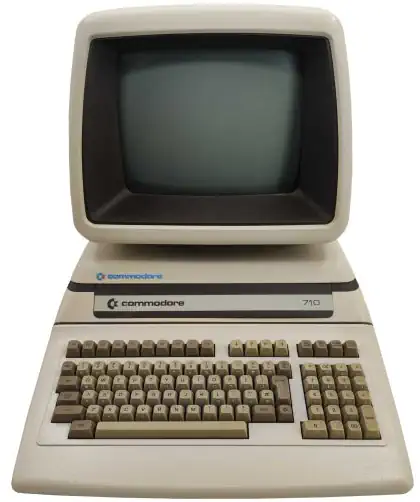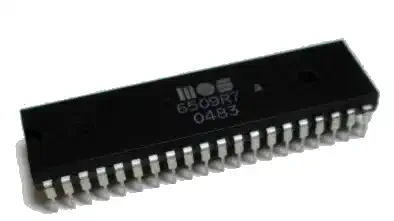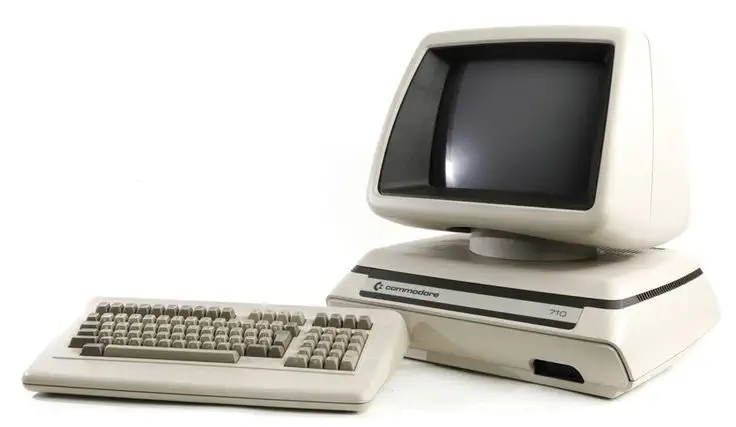Commodore CBM 710 (B128-80)
The commodore CBM 710 is the first in the 700 series and is the same computer as the CBM 610 computer, but with an improved character ROM, that gives the computer 8x14 pixel characters, as opposed to the 8x8 pixel characters of the 610. The 710 also has a detachable keyboard, allowing for a more ergonomic set-up. The Commodore CBM 710 was also known as the B128-80. The CBM 710 used the MOS 6509 processor, an enhanced version of the popular 6502 CPU, running at 2 MHz—twice the speed of earlier Commodore machines.
The CBM 710 came with a high-resolution monochrome display, which provided an 80-column text mode ideal for professional applications like word processing and data management. This 80-column capability was a significant advantage at the time, and a key difference with the CBM 610. This made the CBM 710 a strong competitor in the business market, where readability and screen real estate were crucial for productivity. The display capabilities, combined with Commodore’s BASIC 4.0 and compatibility with third-party software, positioned the CBM 710 as a more sophisticated tool than earlier Commodore models, appealing particularly to businesses and educational institutions.
Despite its capabilities, the CBM 710 struggled commercially, largely due to its high price and competition from IBM's PC line, which quickly became the business standard. Commodore's inconsistent marketing and the CBM-II series' lack of compatibility with the popular VIC-20 and C64 also limited its appeal among existing Commodore users. Nevertheless, the CBM 710 remains a unique part of Commodore’s history—a machine that showcased Commodore's ambition to expand into professional markets with a capable, business-oriented computer, albeit one that was ultimately overshadowed by the rise of IBM-compatible PCs.

Commodore CBM 700 Series
The Commodore 700 series was introduced in 1982 and sold under a few different names. In the US they were sold as the B256 and PET 700 series, in Europe as the CBM 700 series, or CBM 256-80 / B256-80.
The hardware is identical to the CBM 600 series. The machines had an integrated monitor, detachable keyboard and two 5.25" disk drives. The BX256 model was capable of supporting an optional 8088 chip. Graphics and sound capabilities were also identical to the CBM series, except that the 700s had a new character generator ROM, and graphics were generated off an 8x14 matrix. The Kernal ROM determined which generator to use based on inputs that were hard-soldered on the main board.
Commodore CBM-II
The CBM-II has two incarnations, the P series (P = personal, or, home use) and the B series (B = business use). The B series was available with a built-in monochrome monitor with detached keyboard (hi-profile) but also available as a single unit with built-in keyboard but no monitor (lo-profile). These machines are often referred to as the "Porsche PETs" due to incorrect rumors that the case was designed by Porsche. Though Commodore did initially consult Porsche for a case design, it proved too expensive to produce, so Commodore enlisted designer Ira Velinski to create one based on the original PET prototype
CPU View - MOS 6509
THe MOS Technology 6509 is an enhanced version of the 8-bit 6502 CPU. Using bank switching the 6509 is able to address up to 1MByte of RAM. The 6502 also could do bank-switching, but did so via separate logic circuits, the 6509 had this logic built in. This extra logic made the 6509 difficult to program, and it was mainly used in the Commodore CBM-II line of computers.
Source:WikiPedia - MOS Technology 6509Source:WikiPedia - MOS Technology 6502

SID (MOS 6581) - Sound Interface Device
SID is short for Sound Interface Device. It is the name of the sound chip that was used in the VC10, the commodore 64 and the Commodore 128. SID was developed by Bob Yannes, an employee of MOS Technology. Bob was not only an engineer but also knew a lot about music. His intention was to create a different sound chip than other devices at the time. He implemented a subtractive synthesis chip. The chip's distinctive sound is easily recognized and was clearly ahead of the ocmpitition. The SID combines analog and digital circuitry that cannot be 100% emulated, even today.
Source: C64 Wiki


